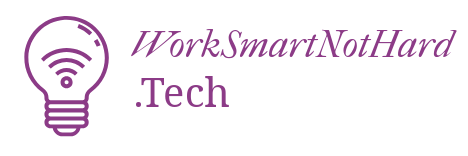Mastering time management is the key to reaching your full potential and boosting productivity. This guide will give you the skills and strategies you need to take control of your day. Say goodbye to procrastination and hello to success. Get ready to improve your time management skills and open up new possibilities.
Key Takeaways
- Discover the power of effective time management to boost productivity
- Learn how to identify and overcome time-wasting habits
- Develop the skills to prioritize tasks and stay focused
- Leverage technology and techniques to manage your time efficiently
- Overcome the myth of multitasking and embrace single-tasking for maximum results
Unlock Your Potential with Effective Time Management
Effective time management is key to reaching your full potential. It’s vital for success because it helps you work smarter and reach your goals. We’ll look at why time mastery is important and how time-wasting habits might be slowing you down.
Understand the Importance of Time Mastery
Time is our most valuable resource – we can’t get it back. By improving your time management skills, you’ll manage your day better, reduce stress, and focus on important tasks. This leads to more productivity, a better work-life balance, and feeling more accomplished.
Identify Your Time-Wasting Habits
To take control of your time, first spot the time-wasting habits that hurt your productivity. These can include too much social media or unnecessary meetings. Knowing these time-wasting habits lets you use productivity hacks to beat them and get your time back.
Good time management isn’t about doing more with less time. It’s about focusing on the right tasks, setting priorities, and making your work flow better. Mastering your time opens up your true potential and helps you succeed.
The Power of Prioritization: Sorting Tasks Like a Pro
Mastering the skill of prioritization is key to boosting your productivity. By sorting your tasks wisely, you can do more and better. Learn how to prioritize like a pro and see your productivity jump.
Understanding the impact of each task is the first step. Don’t just do tasks as they come. Sort them into high-impact, medium-impact, and low-impact groups. This method helps you focus on what’s most important for your success.
After sorting, plan your tasks in order of priority. Begin with the high-impact tasks that will make the biggest difference. Give them your full focus. Then, move on to the medium and low-impact tasks, balancing your work for maximum productivity.
Learning to prioritize tasks changes the game in task management and productivity strategies. Sorting tasks like a pro boosts your sense of achievement and unlocks new levels of prioritization for success.
“The key to productivity is not doing more, but doing the right things.” – Cal Newport
| Task Prioritization | Impact Level | Example Tasks |
|---|---|---|
| High-Impact | Significant influence on goals | Drafting a crucial proposal, conducting a strategic analysis, or negotiating a high-value contract |
| Medium-Impact | Moderate influence on goals | Responding to routine emails, scheduling team meetings, or updating project status reports |
| Low-Impact | Minimal influence on goals | Organizing your digital files, clearing out your inbox, or updating your social media profiles |
By focusing on high-impact tasks, you’ll boost your productivity and reach your goals faster. Embrace prioritization and watch your success grow!
Time Management: The Key to Productivity Bliss
Learning how to manage your time is the key to a productive life. We’ll look into how time-blocking can change everything. And we’ll see how technology can help you manage tasks better. Say goodbye to a long to-do list and hello to a schedule that helps you succeed.
Embrace Time-Blocking Techniques
Time-blocking is a powerful way to boost your productivity. It means setting specific times for tasks to help you focus and avoid distractions. Try out different time-blocking methods to see what works best for you.
Leverage Technology for Efficient Task Management
Today, we have many tools and apps to help us manage our time better. These tools can help you keep track of tasks and work together with others. Look through the many options available and pick the ones that fit your needs and how you work.
| Productivity Tool | Key Features | Pricing |
|---|---|---|
| Trello | Kanban-style task management, collaboration, file sharing | Free, with paid plans starting at $5/user per month |
| Asana | Comprehensive project management, team collaboration, calendar integration | Free, with paid plans starting at $10.99/user per month |
| Todoist | Intuitive to-do lists, task prioritization, productivity tracking | Free, with paid plans starting at $4/user per month |
Use these strategies and tools to boost your productivity. With the right approach and tools, you’re on your way to a productive life.
Multitasking Myth: Why Single-Tasking Reigns Supreme
The idea that multitasking boosts productivity is not supported by facts. Single-tasking is actually better for focus and efficiency. Let’s see why and how to improve your focus for single tasks.
Our brains can’t handle many tasks at once. Trying to do so splits our focus, lowers concentration, and makes mistakes more likely. This leads to a big drop in productivity.
“The human brain is not designed to multitask effectively. It’s designed to focus on one thing at a time and do it well.”
Single-tasking lets us focus fully on one goal. This sharp focus improves our work quality and cuts down the time needed to finish tasks. It makes us more productive.
To use single-tasking well, you need to fight the urge to multitask. First, spot your biggest time-wasting habits, like always checking email or social media. Then, try to cut down on these distractions.
Use time-blocking to set focused work periods. Also, find apps that help you stay on task. By getting good at single-tasking, you’ll find you’re more focused and efficient. This means you can do more in less time.
Tame the Procrastination Monster: Strategies to Stay Focused
Procrastination can be a big challenge, but you can beat it with the right focus strategies. We’ll look at ways to spot and beat your procrastination triggers. This will help you take back your time and boost your time management skills.
Identify Your Procrastination Triggers
Understanding what makes you procrastinate is the first step to beating it. Think about what tasks or situations make you delay. Is it a certain project that scares you? Or maybe social media distracts you?
- Pinpoint the specific activities or circumstances that cause you to procrastinate.
- Recognize the emotional responses, such as anxiety or boredom, that contribute to your procrastination habits.
- Acknowledge any self-limiting beliefs or perfectionist tendencies that may be fueling your reluctance to get started.
Overcome Procrastination Triggers
After figuring out what causes your procrastination, it’s time to fight it. Use focus strategies to stop putting things off and get back to being productive.
- Break tasks into manageable steps: Don’t try to do everything at once. Break big projects into smaller, easier tasks.
- Eliminate distractions: Get rid of things that distract you, like social media and clutter.
- Reward yourself: Celebrate your successes and small wins to keep yourself motivated.
Remember, beating procrastination takes time and effort. Keep using these time management tips, and you’ll get better at staying focused and productive. You’ll finally defeat the procrastination monster.
The Pomodoro Technique: Boost Productivity with Intervals
Productivity is key for anyone aiming high, and the Pomodoro Technique changes the game. This method uses focused intervals to boost your productivity and keep you on track.
Understand the Pomodoro Principle
The Pomodoro Technique is all about short, focused work sessions with breaks in between. You set a timer for 25 minutes (a “Pomodoro”) and work on one task without distractions. After 25 minutes, you take a 5-minute break before starting the next Pomodoro.
Implement the Pomodoro Technique Step-by-Step
- Choose a task you need to accomplish and set a Pomodoro timer for 25 minutes.
- Work on the task without any interruptions until the timer goes off.
- Take a 5-minute break to recharge, then repeat the cycle.
- After four Pomodoros, take a longer 15-20 minute break.
- Rinse and repeat, tracking your completed Pomodoros throughout the day.
The Pomodoro Technique is simple yet powerful. It helps you stay focused during work intervals. By breaking your day into smaller tasks, you improve your time management and get more done in less time.

“The Pomodoro Technique has been a game-changer for my productivity. It helps me stay focused and avoid getting bogged down in distractions.” – Jane Doe, Productivity Enthusiast
Batch Your Tasks for Maximum Efficiency
In the quest for productivity and time management, task batching is a key strategy. It means grouping similar tasks together. This approach helps you do more in less time and boosts your efficiency.
Mastering task batching is all about focusing on what you do often. When you do similar tasks together, you get into a flow state. This makes each task easier and faster to complete. It also helps you stay focused and reduces mental strain.
- Identify your recurring tasks: Look at what you do daily or weekly. Find tasks that you do over and over. These could be emails, updating spreadsheets, scheduling, or creating content.
- Group similar tasks together: After finding your tasks, put them into groups. For example, do all your email tasks first, then your content creation tasks.
- Allocate dedicated time slots: Set aside specific times in your calendar for each task group. This keeps you focused and stops you from jumping between tasks.
- Minimize distractions: When working on tasks, reduce distractions. Turn off notifications, close extra tabs, and make a space where you can focus better.
Using task batching can greatly improve your productivity and time management skills. It makes your work flow better, cuts down on mental tiredness, and increases efficiency. This can help you reach your goals faster.
“The key to productivity is not working harder, it’s working smarter.” – unknown
Mastering Work-Life Balance: Strategies for Harmony
In today’s fast-paced world, finding a good work-life balance is hard. Yet, it’s key for staying productive, managing time well, and feeling good overall. We’ll look at ways to set clear boundaries and handle expectations. This helps you do well at work and in your personal life.
Set Boundaries and Manage Expectations
Setting clear boundaries is crucial for a good work-life balance. You need to say “no” to things that take away from your personal time. It’s important to tell your colleagues, clients, and family about your free time and limits.
It’s also key to manage expectations well. Talk about deadlines, workloads, and what you can do with your boss or team. Setting realistic goals helps you avoid taking on too much. This way, you keep your work and personal life in balance.

A balanced life isn’t about being perfect. It’s about finding a rhythm that lets you succeed in every part of your life. With the right strategies, you can achieve work-life harmony. This opens up your full potential.
The Art of Delegation: When to Let Go and Trust Others
In the quest for better productivity and time management, learning to delegate is key. We often hold onto tasks we know well, fearing that giving them to others will lower quality. But, letting go and trusting others is the path to unlocking your full potential.
Delegation is not a sign of weakness. It’s a smart move that can greatly increase your productivity. By giving certain tasks to your team or outside experts, you free up time. This lets you focus on big, strategic tasks that move your business forward.
When to Delegate: Identifying the Right Opportunities
- Tasks that you don’t need to do yourself
- Jobs that fit your team’s skills best
- Tasks that take too much time and pull you away from your main work
- Projects that need a new view or special skills
The Art of Effective Delegation
- Clearly tell people what you want and expect
- Give them the tools and support they need
- Set up ways to check on progress and hold people accountable
- Help and give feedback, but don’t control every detail
- Thank and reward your team for their hard work
Mastering delegation not only saves time but also builds a trust and empowerment culture in your team. Letting go can make your productivity and success grow.
| Benefits of Delegation | Potential Challenges |
|---|---|
| Increased productivity and focus | Difficulty in relinquishing control |
| Opportunity for team development | Concerns about task quality or deadlines |
| Enhanced work-life balance | Lack of trust in team members’ abilities |
| Fostering a culture of trust and empowerment | Reluctance to hold others accountable |
“Delegation is not a sign of weakness, it’s a sign of strength. It shows that you trust your team and are willing to empower them to succeed.”
Conclusion: Time Management – Your Path to Success
Congratulations! You’ve started an amazing journey to master time management and boost your productivity. You’ve learned how to unlock your full potential, beat procrastination, and prioritize tasks well.
Now, you have the skills to handle modern life’s challenges. You can use technology to make your work easier and achieve your goals with focus and efficiency.
Remember, time management is a journey, not just a goal. Keep improving your skills and watch your dreams come true. Time is on your side, and with the right mindset and tools, you’ll reach great heights.

